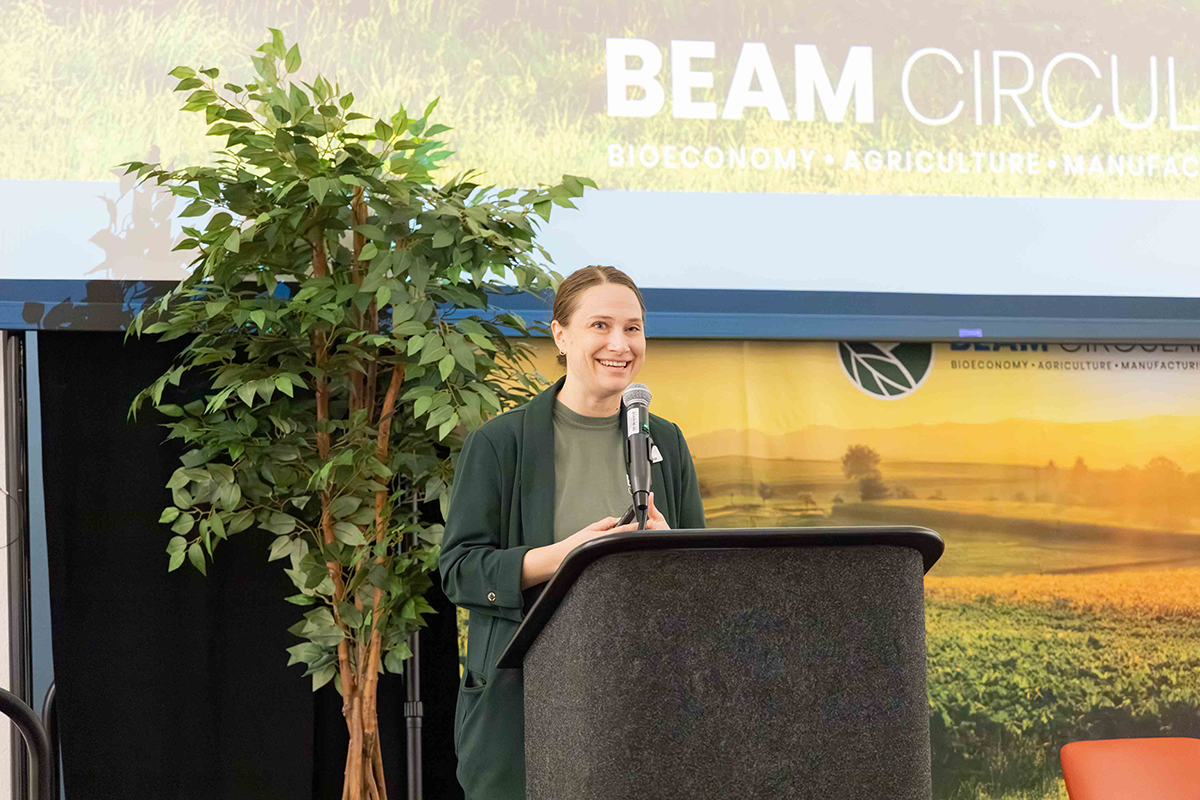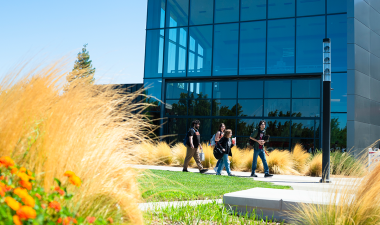
Students, educators, researchers, agriculture industry leaders and policymakers came together at Stanislaus State Wednesday, Nov. 5, to take part in the California Circular Bioeconomy Summit, also known as BioCirCA. Hosted by local nonprofit BEAM Circular, experts shared how the Central Valley’s agricultural byproducts can fuel new biotechnologies that reduce waste, lower emissions and create new economic opportunities in the region.
“We are focused on exploring what’s possible through the circular bioeconomy, imagining how we use and protect the resources all around us and how we can create a more prosperous future for our kids and our community," said BEAM Circular CEO Karen Warner.
A circular bioeconomy transforms agricultural and food waste and by-products into innovative materials, energy and products, cutting pollution while creating jobs. In contrast, a linear economy creates waste by disposing of used materials.
In the middle of one of the world’s most productive farming areas, Stanislaus State is helping find new ways to use agricultural by-products. By bringing together research, industry and education, the University is working to reduce waste, create jobs and strengthen the Valley’s economy for years to come.
“When we look at what some people might call waste or waste streams, things like agricultural residues, nutshells, retired orchard wood, food waste, food processing and wine processing side streams, city wastewater, forestry residues that are cleared to prevent wildfires, we often see problems. We see costs. We see potential pollution and risks. We see logistics,” Warner said. “But through the lens of the circular bioeconomy, we and our partners see potential.”
Stanislaus State is one of BEAM Circular’s partners, a role that connects the University’s academic and research strengths to real-world efforts that promote sustainability and regional prosperity.
In August, the University received a $435,255 grant from BEAM Circular to establish the Centre for Sustainable Biotechnology, a state-of-the-art research and training hub dedicated to advancing workforce development in biotechnology and the circular bioeconomy in Stanislaus County. Led by Principal Investigator Alok Arun, an associate professor of biological sciences at Stan State, existing facilities on the third floor of the Naraghi Hall of Science will be renovated to create a modern laboratory with bioreactors, sequencing and imaging tools and plant growth chambers.
The University is also a founding member of the Circular Bioeconomy Innovation Collaborative (CBIO Collaborative), a vast network of partners launched with support from the National Science Foundation, which is shaping a long-term vision for the future of the bioeconomy.

“Together with BEAM Circular and the many CBIO Collaborative partners in this room, we have built a model for collaboration that connects education, innovation and industry, aligning talent development with the needs of an emerging, circular bioeconomy here at Stan State,” President Britt Rios-Ellis said during the event’s opening welcome.
“This work is already building momentum, and you all are a very strong testament of that momentum taking shape through the launch of catalytic new projects and programs — from reimagining how we teach innovation and sustainability, to expanding hands-on research opportunities, to preparing teachers and students to engage with new technologies that will define the next generation of jobs.”
Warner emphasized that while California produces 75% of the nation’s fruit and nuts, it also produces more than 400 crops and commodities. She estimates that California will generate more than 56 million tons of organic waste annually by 2045.
“That’s a lot of potential with the power of biology,” Warner said. “Those same natural materials that we already produce every single day across our state can become bio-based plastics, chemicals, textiles, fertilizers, green fuels, high value proteins and advanced materials that will power new industries, products that are renewable, biodegradable and rooted in local value creation.”

Karen Ross, secretary of the California Department of Food and Agriculture, attended and spoke about the vast opportunities for innovation in the Golden State.
“Our farmers are so innovative, and I give huge credit to our university systems and extension of knowledge from campuses, translating that to practical application on the land and scaling it up,” Ross said. “We’ve had the climate, the resources, the innovative people and the university system to support all of that, to produce food in ways that few others can. That’s a tremendous blessing for consumers around the world, and especially for us in California.”
Located in the heart of the agricultural powerhouse that is the Central Valley, Stanislaus State is working closely with BEAM Circular to become a major destination dedicated to advancing workforce development in biotechnology and the circular bioeconomy in Stanislaus County.
“As a University, we believe deeply in the power of education and collaboration to drive regional transformation,” said Rios-Ellis. “The work we’re all doing together — universities, industry, government, community — is more than technology or infrastructure. It’s about building capacity, unlocking opportunity and ensuring that our students and communities have every opportunity to thrive.”



